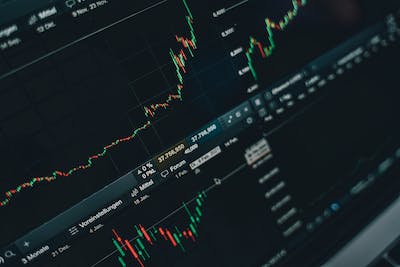Understanding Algorithmic Trading: Unraveling the Complex World of Automated Trading Strategies

IronFX – Online CFD and Forex Trading
December 19, 2023
VT Markets
February 19, 2024Algorithmic trading, often referred to as algo trading, is a sophisticated approach to financial markets that relies on computer algorithms to execute trading strategies with speed, precision, and efficiency. This advanced form of trading has gained prominence in recent years, transforming the landscape of financial markets and how transactions are conducted.
What is Algorithmic Trading?
Algorithmic trading involves the use of predefined sets of rules and instructions encoded into algorithms to automate the process of buying or selling financial instruments. These algorithms, written by quantitative analysts or quants, are designed to analyze market data, identify patterns, and execute trades without human intervention.
Key Components of Algorithmic Trading:
-
Market Data Analysis:
- Algorithms process vast amounts of market data in real-time, including price movements, trading volumes, and other relevant information.
- Technical indicators and statistical models are often employed to identify trends, volatility, and potential trading opportunities.
-
Strategy Formulation:
- Quants develop trading strategies based on historical data and market analysis.
- Strategies can range from simple ones, like moving average crossovers, to complex mathematical models and machine learning algorithms.
-
Order Execution:
- Algorithms are programmed to execute trades automatically when specific criteria or conditions are met.
- High-frequency trading (HFT) is a subset of algorithmic trading that focuses on executing a large number of orders at extremely high speeds.
-
Risk Management:
- Effective risk management is crucial. Algorithms incorporate risk controls to limit potential losses and ensure the stability of trading systems.
- Stop-loss orders and position size limits are commonly used risk management tools.
Advantages of Algorithmic Trading:
-
Speed and Efficiency:
- Algorithms can execute trades in a matter of milliseconds, capitalizing on even the smallest market movements.
- Eliminates the delays associated with manual trading.
-
Precision and Consistency:
- Algo trading ensures that trades are executed according to predefined rules without emotional influence.
- Reduces the impact of human errors and ensures consistency in strategy implementation.
-
Backtesting and Optimization:
- Traders can backtest algorithms using historical data to assess their performance under various market conditions.
- Allows for optimization and refinement of strategies before real-time deployment.
-
Diversification:
- Algo trading enables the simultaneous execution of multiple strategies across different assets and markets.
- Provides opportunities for diversification and risk mitigation.
Challenges and Considerations:
-
Technical Risks:
- Connectivity issues, server outages, or software glitches can pose significant risks to algorithmic trading systems.
- Robust technological infrastructure is essential to mitigate these risks.
-
Market Conditions:
- Algorithms may struggle to adapt to abrupt changes in market conditions, particularly during extreme events.
- Continuous monitoring and periodic adjustments are necessary.
-
Regulatory Scrutiny:
- Algorithmic trading is subject to regulatory oversight to ensure fair and transparent market practices.
- Compliance with regulatory requirements is crucial to avoid legal complications.
Conclusion:
Algorithmic trading represents a paradigm shift in the world of finance, offering unparalleled speed, efficiency, and precision. As technology continues to advance, algorithmic trading is likely to evolve further, shaping the future of financial markets. However, it's important for traders and institutions to approach algorithmic trading with a comprehensive understanding of its complexities and associated risks, balancing the potential rewards with prudent risk management strategies.


